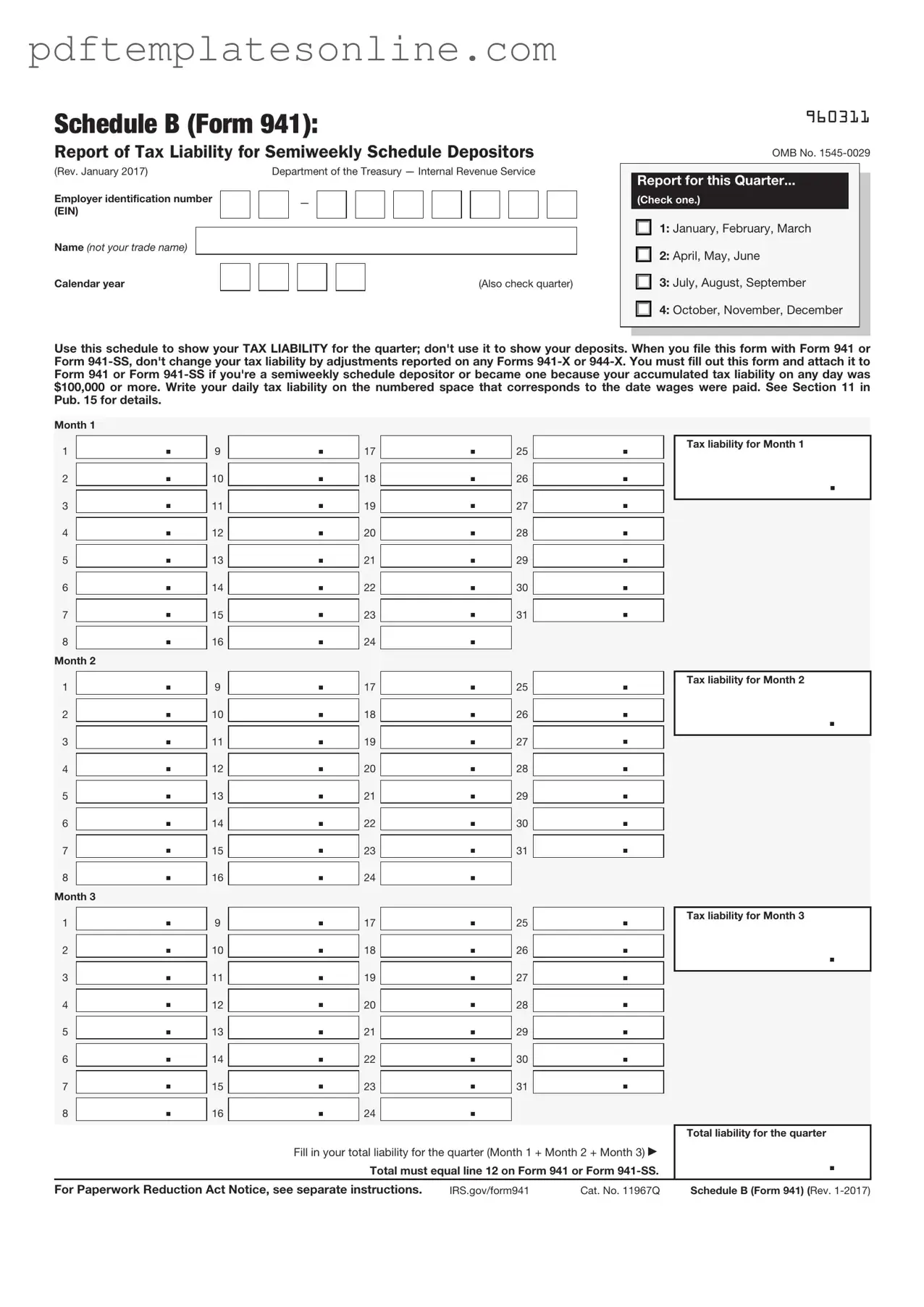Filling out the IRS Schedule B (Form 941) can be a straightforward process, but many individuals make common mistakes that can lead to complications. One frequent error is failing to report all wages and tips accurately. It's essential to include all taxable wages and tips paid to employees during the quarter. Omitting any amounts can result in discrepancies and potential penalties.
Another mistake involves incorrect calculations of taxes withheld. Individuals sometimes miscalculate the amount of federal income tax withheld from employees' paychecks. Ensuring that these figures are accurate is crucial, as they directly impact the employer's tax liability.
Some filers also overlook the importance of reconciling the amounts reported on Form 941 with their payroll records. Discrepancies between these documents can raise red flags with the IRS. It's advisable to double-check that the numbers match before submission.
In addition, many people forget to sign and date the form. A missing signature can lead to delays in processing and may even result in penalties. Always remember to complete this final step to validate the submission.
Not using the correct version of the form is another common error. The IRS updates forms periodically, and using an outdated version can lead to complications. Always ensure you are using the most current version available on the IRS website.
Another mistake is submitting the form late. Employers must file Form 941 quarterly, and failing to meet the deadline can result in penalties. Setting reminders can help ensure timely submissions.
Some individuals also misinterpret the instructions provided by the IRS. It is essential to read the guidelines thoroughly, as they offer specific directions on how to complete the form correctly. Misunderstanding these instructions can lead to errors.
Additionally, people sometimes fail to keep copies of their submitted forms. Retaining copies is important for record-keeping and can be invaluable if questions arise in the future regarding the submitted information.
Lastly, not seeking professional help when needed can lead to mistakes. If there is uncertainty about how to fill out the form correctly, consulting a tax professional can provide clarity and ensure compliance with IRS regulations.
